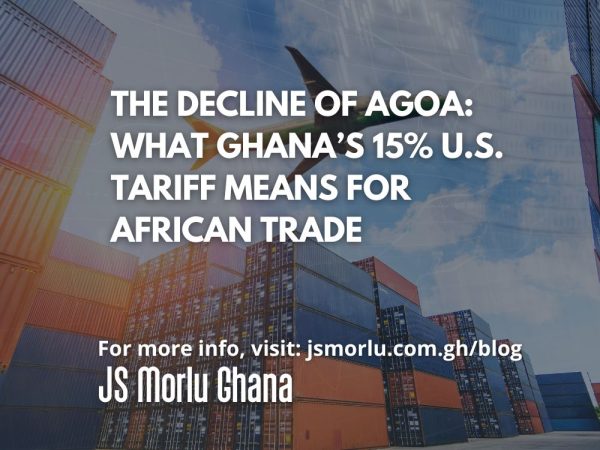Trade agreements can act like golden bridges between nations, giving exporters smoother access to lucrative markets. For over two decades, the African Growth and Opportunity Act (AGOA) was one such bridge, connecting sub-Saharan Africa with the United States by offering duty-free access to thousands of products.
But recent developments suggest that this bridge is crumbling.
What Happened?
During a presidential media briefing, President John Dramani Mahama declared that “AGOA is technically dead” after the U.S. imposed 15% tariffs on Ghanaian exports.
For years, African countries, including Ghana benefited from zero tariffs on eligible exports to the U.S., thanks to AGOA. It was meant as a development-oriented concession, recognizing Africa as an emerging partner rather than just another competitor in the global marketplace.
However, the Trump administration took a harder stance. Driven by a transactional view of trade, new tariffs were introduced, undoing years of duty-free benefits. For Ghana, this instantly meant reduced competitiveness and higher barriers to its goods in the U.S. market.
A Quick Refresher: What Is AGOA?
- Enacted: 2000
- Coverage: More than 1,800 products duty-free, plus 5,000 additional items under the Generalized System of Preferences.
- Purpose: Encourage trade, economic growth, and integration between the U.S. and sub-Saharan Africa.
- Extension: Updated in 2015, AGOA was supposed to run until 2025.
In theory, AGOA was more than just a trade program. It was a policy tool designed to stimulate economic development through market access.
Why the Tariff Matters for Ghana
A 15% tariff may sound small, but for exporters, it can mean the difference between thriving and losing contracts. Imagine a Ghanaian cocoa processor trying to sell to a U.S. buyer. Overnight, their product becomes 15% more expensive, while competitors in Latin America or Asia face no such penalty.
This pricing shift:
- Erodes competitiveness in U.S. markets
- Pressures local industries, especially agriculture and textiles
- Threatens job creation tied to export-led growth
For Ghana, which has been working to diversify beyond raw commodities, this is a heavy blow.
Broader Implications for Africa
The end (or weakening) of AGOA signals:
- Increased uncertainty in U.S.-Africa trade relations
- Potential reorientation of African trade toward Europe, Asia, or intra-African markets (such as the African Continental Free Trade Area, AfCFTA)
- Lessons for policymakers, highlighting the need to reduce reliance on concessions that can be overturned with a change in U.S. administration
Looking Ahead
Although Congress technically controls trade policy, presidents often push the limits. The Trump-era tariffs showed how quickly trade dynamics can shift. With AGOA’s renewal uncertain, African countries may need to:
- Strengthen regional trade agreements like AfCFTA
- Invest in value-added exports that are less price-sensitive
- Pursue bilateral trade negotiations beyond AGOA
Key Takeaway
AGOA was once a symbol of partnership and opportunity but shifting U.S. policies have put its future in doubt. For Ghana and other African exporters, the new tariff regime is more than a setback it’s a wake-up call to diversify trade strategies and reduce dependency on U.S. concessions.
At JS Morlu, we track global trade and tax policy shifts because they directly impact the businesses we serve. Whether you’re a small exporter, a non-profit, or a multinational enterprise, staying ahead of regulatory changes is critical to protecting your growth and financial future.
